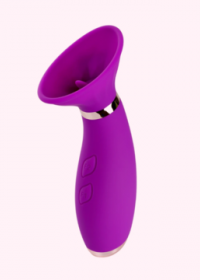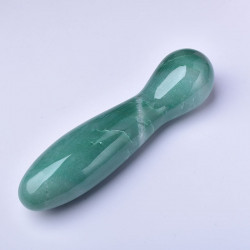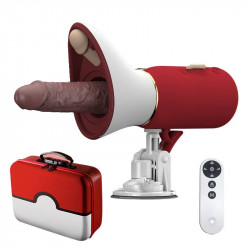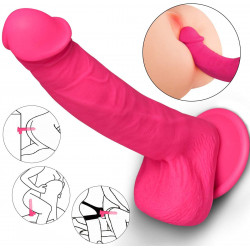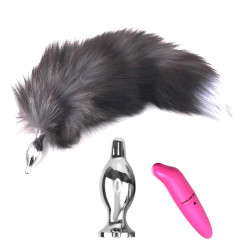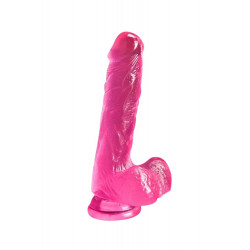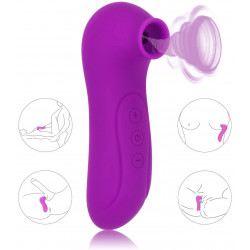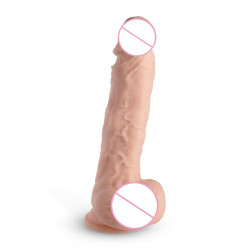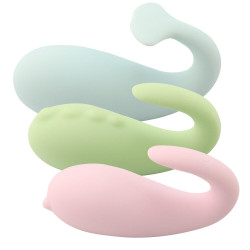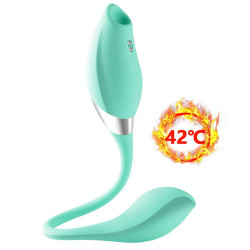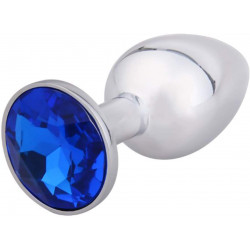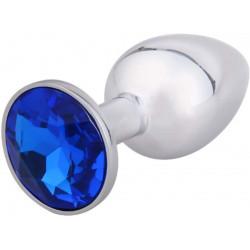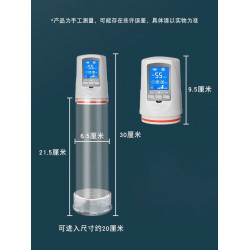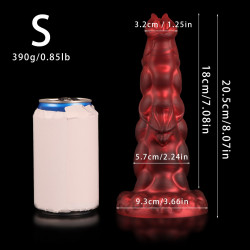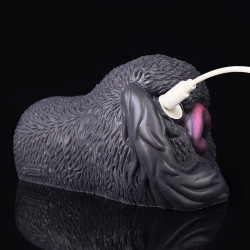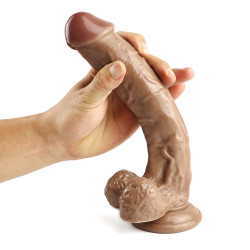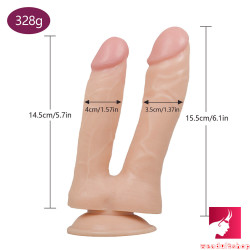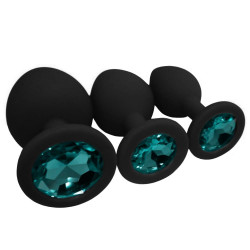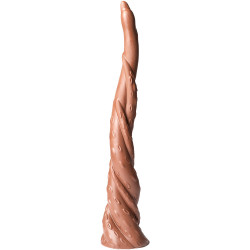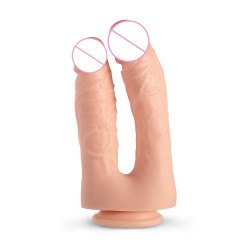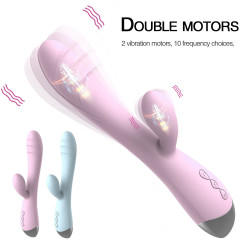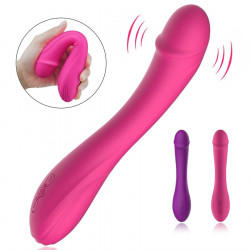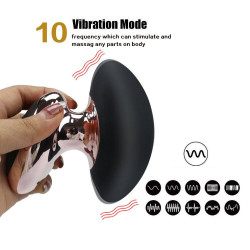
Prone Bone Position: A Beginner's Guide to Getting It Right
According to a 2021 survey, 30% of Americans still choose the conventional doggie stance. Throughout 2024, the prone bone posture received hundreds of likes on social media, indicating its growing popularity.
One opportunity to try something new from other similar positions is the prone bone sex position. It enhances enjoyment for both lovers and permits deep penetration. Because it requires less physical effort, this position is suitable for private moments.
You will learn everything there is to know about the prone bone position from this article. You'll learn basic positioning techniques and more sophisticated advice to make it comfortable and enjoyable. Whether you want to try it for the first time or improve your experience, the guide has all the information you need.
What is the Prone Bone Position: Understanding the Basics
The prone bone position, where one partner rests face down against the surface, is a unique method for intimate connection. Traditional prone positioning and close touch are combined in this position to provide both parties with a pleasant and fulfilling experience.
Definition and key elements
The prone bone position involves lying flat with the front side down and the back side up. The receiving partner avoids excessive bending or stretching and maintains a neutral body position. Both partners can find comfortable postures and naturally distribute their weight.
Why couples enjoy this position
The prone bone position appeals to couples for various reasons. It is more pleasant because it places less strain on the knees and back than standard positions. Additionally, it provides opportunities for focused stimulation and a profound physical connection.
Because of its flexibility, this role is ideal for individuals with varying priorities and degrees of comfort. The prone position is beneficial for:
- Improved stimulation of the G-spot through the proper angles
- stronger physical bond between lovers
- Equitable distribution of weight between the two partners
- Natural postures that lessen bodily stress
Physical and emotional benefits
The prone bone posture creates a unique place for emotional and physical intimacy. Close physical contact fosters vulnerability and trust, making a profound connection between partners. Couples can remain comfortable for longer because of the position's improved weight distribution and decreased joint strain.
Targeted pressure locations and better angles provide partners with more physical stimulation. In addition to its physical advantages, this close-knit position fosters emotional bonding and verbal communication as partners go further into their relationship.
Essential Preparation Steps
Preparing beforehand will make the prone bone posture pleasant and comfortable. Clear communication channels and the proper setup are essential for both partners.
Creating a comfortable environment
Your room needs the appropriate support supplies to begin. Choose a firm, comfortable area to work from and add strategically placed pillows. Place cushions beneath the receiving partner's hips and chest to ensure comfort and proper alignment. Because this position requires full-body contact, the room temperature should feel perfect.
Communication and consent discussion
Before attempting the prone bone position, both partners should discuss it openly. You must communicate your comfort level during the experience with clear verbal and nonverbal cues. A thorough discussion of priorities and boundaries in advance fosters confidence and gives both partners a sense of security and respect.
Physical preparation tips
For comfort and safety, you must pay close attention to placement details. This is a comprehensive checklist for preparation:
- For optimal support, place pillows beneath the hips and chest.
- To prevent strain, distribute weight evenly.
- Maintain a neutral spine for comfort.
- Verify that breathing is not constrained.
- Maintain a comfortable posture for the neck.
Joint pain or muscular tension might result from improper alignment of the prone bone position. Take time modifying the supports and locations until you are both at ease. Regularly check in with one another to maintain comfort and prevent issues.
Since tension reduces enjoyment, the receiving partner should try to relax. As you situate yourself, concentrate on breathing steadily. You become more conscious of your body and experience less anxiety as a result.
Depending on your needs, you may employ additional props or supports. The ideal posture will reduce stress and increase enjoyment. Remember that each body is unique, so what suits one couple may need to be modified for another.
Getting Into Position Safely
When you wish to master the prone bone posture, safety is at the forefront. Proper positioning strategies are necessary for the original step to provide comfort and protection for both partners.
Step-by-step positioning guide
- Start with four to six cushions or supporting pillows.
- Place the chest supports from the clavicle to the iliac crest in this position.
- Make sure the genitalia, breasts, and abdomen are not compressed. Put cushioning beneath the knees.
- Using shin support, raise your toes off the ground.
By taking these actions, a solid foundation is created for both spouses. The receiving partner should maintain a neutral spine to focus on natural alignment without making drastic movements.
Proper alignment techniques
A key factor in avoiding discomfort is maintaining proper body alignment. Avoid excessive lateral rotation and maintain a neutral head position. The thyromental distance should remain between two and three finger breadths to guarantee appropriate neck flexion.
Raise your chest high enough to breathe freely. Adequate torso support is crucial for preventing respiratory problems and ensuring adequate ventilation at all times.
The receiving partner's arms should point forward, and their elbows should be slightly bent. This position permits comfortable blood flow during the experience and avoids nerve compression.
Common positioning mistakes to avoid
Avoid head and neck hyperflexion, which can decrease blood flow. Severe head-side motions might also impair comfort and circulation.
Poor support placement is the primary source of positional issues:
- Insufficient cushioning at pressure spots
- incorrect elevation of the chest
- Inadequate alignment of the spine
- Limited limb support
To avoid tension, keep a careful eye on comfort levels throughout. Open communication between partners allows them to modify if something feels off rapidly. Couples that pay attention to these positioning nuances can have a safe experience with good body alignment.
Mastering Basic Movements
To master movement skills in the prone bone position, you must have patience and pay close attention to details. As the cornerstone of success, we concentrated on comprehending body mechanics and appropriate partner coordination.
Starting slow and steady
Proper angles and placement are important during the initial entrance phase. To improve access, the receiving partner should slightly raise their hips. The penetrating partner may begin in the typical doggie position or change to the prone position.
Entry will go more smoothly if you follow these movement tips:
- To allow for adjustment, begin with light, shallow motions.
- Keep lines of communication open regarding comfort levels.
- Use breathing exercises to help you unwind.
- Apply the proper lubricant to maintain comfort.
Finding your rhythm
Before establishing a consistent rhythm, both partners must be comfortable. The penetrating partner controls movement strength, speed, and depth. Partners can better sync up by starting with slower, more deliberate thrusts.
To establish the ideal angles for enjoyment, the receiving partner actively participates by tilting their hips up. This shift makes better stimulation and a deeper connection possible. Nevertheless, natural bodily alignment is essential throughout.
Adjusting for comfort
With the correct comfort tweaks, an ordinary experience can be transformed into an extraordinary one. The receiving partner can experiment with different leg positions; pulling them together delivers fresh sensations while spreading them wider gives more space.
When things get uncomfortable, it helps to make quick modifications. The penetrating partner can shift into a more perpendicular posture. Positioning supportive pillows in strategic locations can make longer sessions more comfortable.
Physical preparation influences the quality of movement. Regular mobility exercises and stretching enhance comfort in the prone bone position, particularly if you have hip flexibility. By preventing muscle tension, this preparation improves the flow of motions.
Through practice and communication, partners get better at coordinating. They should maintain consistent rhythms and synchronize their breathing patterns. This facilitates a more seamless experience and helps prevent discomfort or strain.
The receiving partner can raise their hips by slightly arching their back for added enjoyment. This adjustment produces the ideal angles for deep penetration while maintaining comfort, especially with supportive pillows.
Communication During Prone Bone
Effective communication is essential to a positive, prone bone experience. Studies reveal that nonverbal clues account for 80% of all communication. Intimate times require partners to understand both verbal and nonverbal cues.
Verbal and non-verbal cues
Without words, your tone of voice, body language, and facial expressions can convey firm information. Direct eye contact may be restricted in the prone bone position, making it even more crucial to pay attention to subtle cues.
Indicators from the body speak louder than words:
- Without using words, facial expressions can portray a wide range of emotions.
- Body posture reveals levels of comfort or stress.
- Touch patterns reveal limits and priorities.
- Emotional moods are reflected in breathing patterns.
Expressing comfort and discomfort
Having open lines of communication about comfort levels contributes to a secure atmosphere. There are opportunities for open communication while you lie face down. Even without direct eye contact, partners can learn alternative ways to communicate their wants.
Constant communication between partners is necessary for physical comfort. Both partners can maintain comfort by frequently checking pressure, depth, and placement. The prone bone posture is ideal for nonverbal input because partners may perceive minor body responses through close physical touch.
Building trust through communication
Honest, regular communication fosters trust. The prone bone position inherently fosters deeper emotional relationships by increasing physical contact. According to Dr. Helen Fisher, a biological anthropologist at Rutgers University, this role's great degree of physical touch makes it ideal for developing intimacy.
Mutually fulfilling experiences are built on the foundation of open communication. The vulnerability of the role enhances emotional ties between partners and encourages significant nonverbal communication. By combining verbal and nonverbal communication, couples can establish an atmosphere that fosters trust and understanding.
Your nonverbal cues and body language impact how people perceive and react to you. Inconsistent body language and spoken statements may result in confusion or mistrust. By being aware of these communication patterns, partners can maintain open, sincere communication throughout their intimate experience.
Enhancing Comfort and Pleasure
Careful consideration and effective support techniques are necessary to maximize comfort and enjoyment from the prone bone position. To improve the experience for both partners, we concentrated on using body positions and props.
Using pillows and props
The placement of pillows has a significant impact on comfort. Ordinary bedding pillows are insufficient; you require specific positioning assistance that maintains their firmness and shape. Supports are needed in these areas:
- To raise the upper body beneath the chest
- For the right angle, between the pelvic region and the bed
- To protect the knees, under the shins
- to avoid uncomfortable regions around bony areas
The kind of assistance is as important as the location. Standard pillows are not as effective as firm pillows or customized wedges. Covers that can withstand moisture help shield the supports and facilitate cleanup.
Managing weight distribution
Weight control is something that both partners need to consider. The entering partner should support themselves with their arms and maintain good weight balance. This maintains intimate touch without putting undue strain on the receiving partner.
Weight distribution becomes even more crucial if you have sensitive areas or had surgery in the past. Individuals with sensitive chest areas or those who have undergone breast surgery require special attention to pressure points. Experiment with various weight distributions until you discover the most effective one.
Breathing techniques
Proper breathing eases tension and promotes relaxation. Diaphragmatic breathing naturally reduces stress and aids in the regulation of body functions. Once you get the breathing right, you'll immediately see the difference.
Consistent breathing patterns contribute to overall comfort. To activate your body's natural relaxation reaction, take deep breaths into your abdomen rather than your chest.
Proper technique is essential since the prone position impacts your breathing. If you arrange your support correctly and pay attention to your breathing, you can breathe comfortably the entire time. Verify adequate room for your diaphragm to move freely between your body and the surface.
The sensation is frequently more incredible for partners who breathe together. Any discomfort that may arise is lessened thanks to this link. Change the height or location of your pillow to provide extra room if breathing seems constricting.
Keep in mind that communication and adjustment are key to becoming comfortable. Applying the proper breathing techniques and support throughout may make the prone bone position fun.
Common Challenges for Beginners
Starting a journey in the prone bone posture might provide several difficulties that require tolerance and comprehension. When a couple is new to this, their primary concerns are often mental hurdles, physical restrictions, and compatibility issues.
Addressing size compatibility
The prone bone position can present unique difficulties due to physical partner variations. According to studies, bodily variances can impact your level of comfort and the modifications you require. This is helpful:
- To improve alignment, provide firm support beneath the hips.
- Adapt entry angles to your comfort level.
- Consider employing specialist positioning tools.
- Continue discussing comfort levels.
Find the ideal balance between support and positioning. Research shows that firmer surfaces provide more stability than soft beds. Although working with size discrepancies may seem complicated, most compatibility concerns can be resolved using proper planning and positioning strategies.
Managing physical limitations
You must carefully consider and adjust to your physical limitations. Research shows that people with certain diseases may require more help or alternative methods. Certain medical issues or prior surgeries may impact comfort levels and require extra attention.
Positioning requires special care if you have sensitive joints or back pain. According to medical research, it's critical to maintain a neutral spine and refrain from applying excessive pressure to delicate places. Proper cushioning and supports help prevent strain and distribute weight evenly.
Adapted methods may be more effective if you have mobility issues.
The key to success is:
- Being aware of your bodily limitations
- Making use of the appropriate support networks
- Maintaining appropriate body alignment
- Verifying comfort levels all along
- Making adjustments as necessary
Overcoming anxiety
Anxiety has a significant impact on intimate experiences, affecting both the emotional and physical. These emotions are expected, and using anxiety-reduction strategies can make things more comfortable.
Tension and difficulty relaxing are common physical manifestations of anxiety. These emotions are common and may be managed using various techniques, regardless of your degree of experience. According to a medical study, progressive relaxation and breathing exercises can reduce anxiety.
Effective communication can better manage anxiety. Studies have shown that discussing worries honestly boosts self-esteem and lowers stress. Clear communication before and during intimate moments creates a supportive environment for both parties.
This is how to deal with anxiety:
- Do some deep breathing exercises.
- Continue to communicate
- Begin slowly and increase progressively.
- Prioritize comfort before performance and acknowledge that transitional periods are standard.
According to research, anxiety can lead to a vicious cycle of worry that impairs enjoyment and bodily reactions. Remember that understanding these emotions typically relieves the strain and normalizes the experience. According to medical professionals, fostering a relaxed atmosphere and maintaining open lines of communication promote confidence over time.
Being physically prepared significantly impacts comfort levels and can lessen anxiety. Research indicates that appropriate support and placement can reduce stress and increase confidence. You should experiment with different positions to determine what feels best.
It takes time to become accustomed to new positions. Medical studies emphasize the value of gradual improvement and patience in fostering confidence. Couples who communicate well and pay attention to each other's bodily and emotional well-being can overcome obstacles together and have fun.
Aftercare and Recovery
Proper aftercare following the prone bone position promotes both mental and physical healing. Research shows that committed recuperation techniques significantly increase overall happiness and lower the chance of muscle strain.
Post-position comfort measures
The first step in recovery is a cautious change of position. According to medical research, moving slowly helps avoid unexpected strain. During this stage, proper support is still essential. You must be aware of any pressure points and potentially unpleasant spots.
Necessary comfort measures consist of:
- Putting cold compresses on any strained or pressured regions
- Keeping the spine in the proper alignment when shifting positions
- Putting your body in the appropriate position with supportive pillows
- Making sure you drink enough water will help your muscles heal
- Keeping an eye out for any unusually painful or pressured places
We concentrated on releasing the tension in our bodies right away. Studies have shown that proper positioning during recuperation speeds up healing and decreases muscular fatigue. Neutral spine alignment can also avoid post-activity soreness.
Emotional check-in practices
Recovery on an emotional level requires equal focus. Medical research highlights the need for open communication during this stage. Partners should establish a secure environment to voice worries or discomfort.
Discussing bodily comfort levels and resolving experience-related fears are effective emotional check-ins. Research indicates that couples who maintain a dialogue during their recovery experience greater levels of satisfaction.
These methods are effective:
- Frequent verbal updates regarding comfort
- Verifying any issues
- Discussing the modifications required for subsequent sessions
- Using physical proximity to maintain emotional ties
Physical recovery tips
Several biological systems require special attention during physical recuperation. Research shows that proper hydration aids in muscle repair. Drinking enough water helps muscles recuperate more quickly and avoid discomfort.
Stretching correctly aids with healing. Medical studies advise light stretching activities to avoid stiff muscles. Maintaining proper posture while recovering helps avoid undue strain.
The following evidence-based suggestions support the best possible recovery:
- Observe appropriate hydration guidelines.
- Perform mild stretches.
- Keep an eye out for any pressure or discomfort spots.
- Maintain the proper spinal alignment.
- During relaxation intervals, use appropriate support.
Proper body mechanics are important during recuperation. Studies have shown that maintaining a neutral spine alignment can avoid post-activity pain. Pay attention to each person's comfort and healing, as their rehabilitation demands may vary.
The medical study emphasizes slow movement during healing. Resuming activities too soon hinders the healing process. Observing physiological reactions during recuperation aids in the early detection of possible problems.
Depending on their physical circumstances, different healing strategies may be required for certain individuals. Individuals with joint or muscle sensitivity should pay close attention to their rehabilitation regimen.
Good support is essential until complete recuperation occurs. Studies have shown that appropriate positioning during rest dramatically impacts the quality of recovery. Although there may be some initial discomfort, appropriate recovery techniques reduce long-term consequences.
Although everyone recovers differently, healing is improved when recovery strategies are consistently followed. Frequent progress reports aid in the early detection of issues. Ignoring appropriate healing procedures could result in needless stress or suffering.
Research shows that effective healing techniques reduce discomfort and enhance subsequent experiences. Spending time on appropriate aftercare promotes long-term enjoyment as well as immediate comfort.
To Conclude
Getting the prone bone position right takes time, effort, and meticulous attention to detail. Although this job may be difficult initially, it offers a unique experience through cosiness and closeness. Appropriate positioning strategies, honest communication, and suitable aftercare procedures provide a basis for positive encounters.
The path to success is paved with careful planning and steady advancement. The proper breathing techniques, weight distribution, and support positioning significantly increase comfort levels. Regular verbal and nonverbal check-ins that guarantee mutual satisfaction help partners develop trust.
With proper planning and communication, most couples can overcome anxiety or physical constraints. Remember that every person's body reacts differently, so spending time identifying your comfort zones will result in more excellent encounters.
With knowledge and comprehension, the prone bone experience becomes more fulfilling. Devoted physical and emotional rehabilitation techniques might help couples avoid discomfort while strengthening their bond. When followed regularly, these rules contribute to creating intimate experiences that are fulfilling, cosy, and meaningful.

